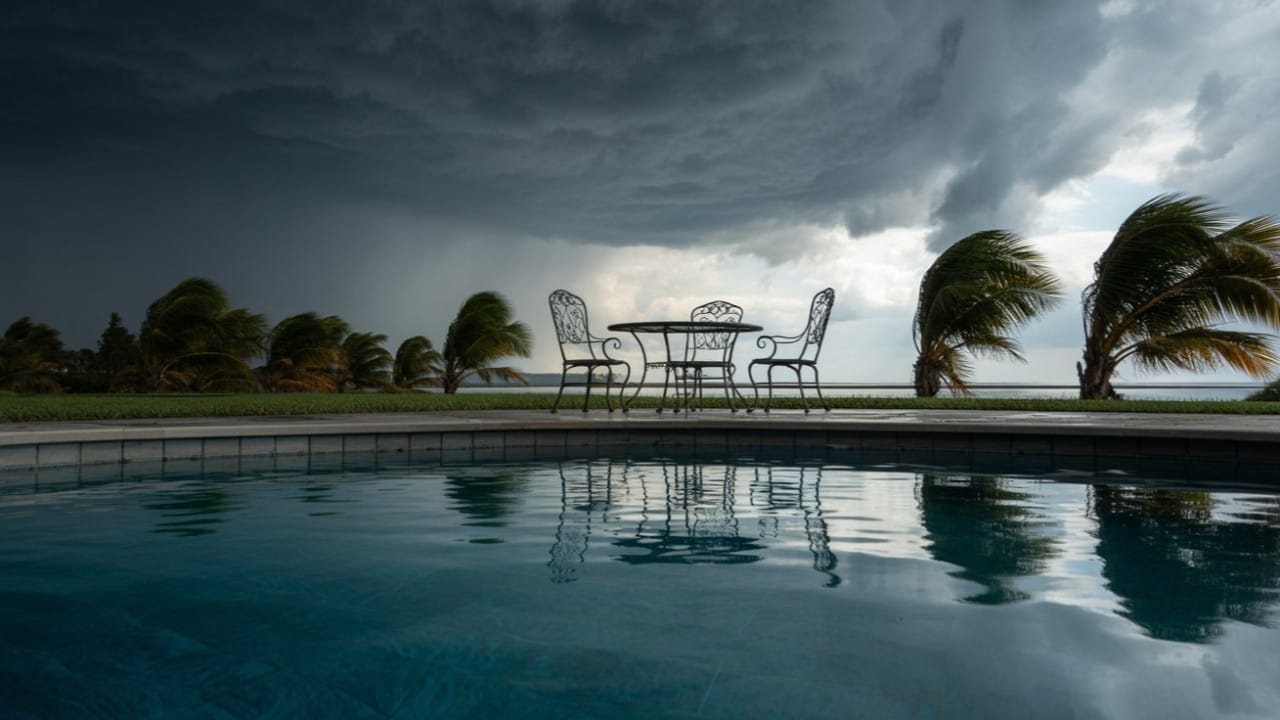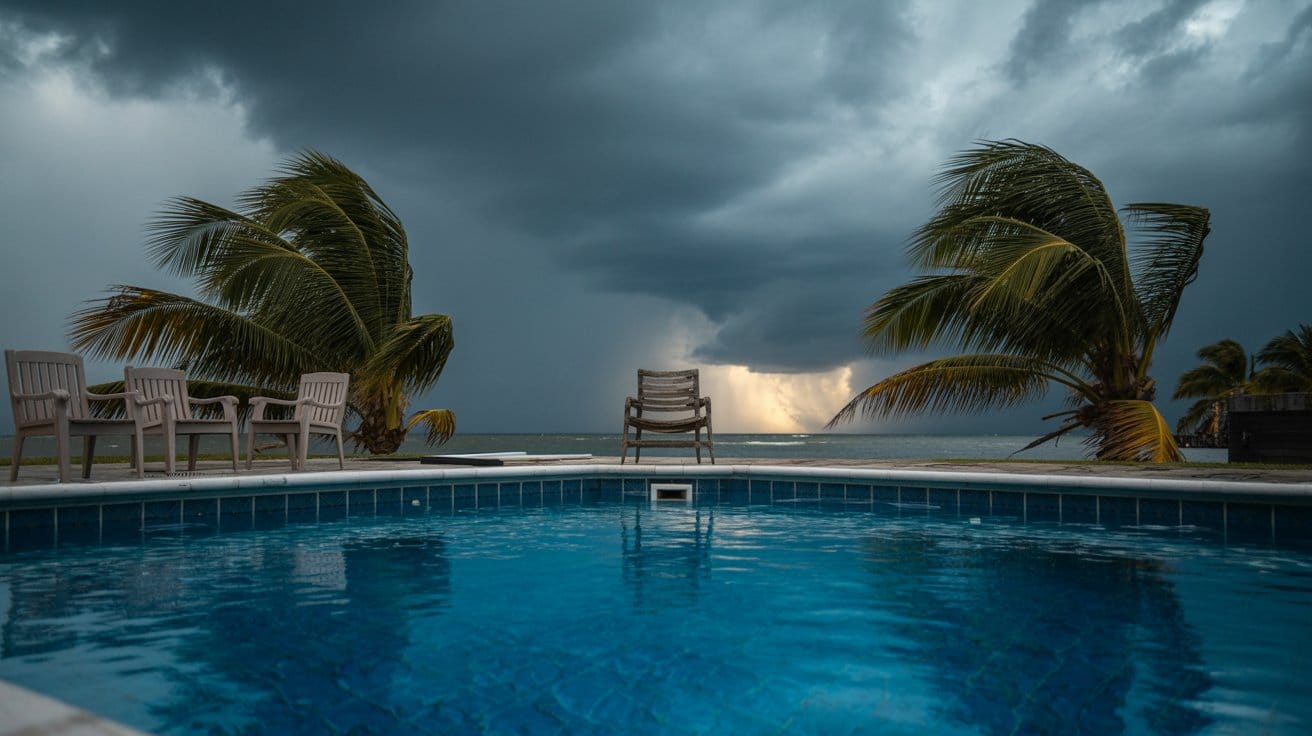What to Do If Pool Is Overflowing From Rain: A Safe & Compliant Drainage Guide

Heavy rain fills pools fast. A bit of extra water is fine, but once it spills over, it can cause trouble. The yard gets soggy, and the pump has to work harder. No need to stress. Just lower the water and check your pool. It’s an easy fix.
Here’s what to do if the pool is overflowing from rain:
Step 1: Immediate Safety and Equipment Checks
Before touching the lower pool level, make sure everything is safe.
- Turn off auto-fill systems. Any automatic water-leveller or refill line should be switched off first.
- Turn off the pump and heater power. If they run while the water goes down, they can get too hot and break. The safest option is to flick the breaker off completely.
- Take a look around. Walk the area and see where the overflow water is going. If it’s running toward a patio or shed, fix the flow before you start draining.
- Spending a minute here can save a pump or heater from burning out later.
Step 2: Pick the Right Way to Drain
Your aim is simple: bring the level down until it’s sitting halfway up the skimmer opening. That’s the normal operating spot.

Option 1: Submersible Pump (Fast and Controlled)
A small pump can move water fast. Put it on the top step, connect a hose, and let the water flow out to a safe spot.
Pro Tip: Keep a small submersible pump in your pool kit. It’s handy for heavy-rain pool issues, like cleanups and general maintenance.
Option 2: Filter “Waste” or “Drain” Setting
- If you use a sand or DE filter:
- Turn the pump off.
- Move the multiport valve to Waste or Drain.
- Restart the pump and keep an eye on the water level.
- Once it hits mid-skimmer, shut it off and return the valve to the Filter.
- Cartridge filters don’t have this feature, so stick with a submersible pump.
- Keep watching as it drains. Going too low is just as bad as being too full.
Follow the Rules When You Discharge Water
This part is about doing things the right way, both for your property and the environment.
Never drain pool water into the street or onto a neighbour’s yard. The chlorine or salt can hurt plants and flow into local creeks.
Safe places to drain water:
- Sewer line: Ask your local council first. If they say yes, you can run the hose into a drain inside, like your laundry sink. Take out the chlorine before you do.
- Lawn or garden: You can let the water out there if it doesn’t have much chlorine.
The NSW Environment Protection Authority says it should be under 0.1 mg/L before it goes on the grass or in the soil.
And hey, better peek at your council’s site first before you pour out a bunch of water. Rules like to change when you’re not looking.

Re-balance Your Pool Water After Rain
Rainwater is soft and a little sour. After a big rain, the pool water feels strange. You need to check it and make it good again.
Run these three tests right away:
- Chlorine: Make sure sanitiser levels are holding.
- Total Alkalinity (TA): Helps stabilise your pH.
- pH: Keeps water gentle on skin and equipment.
Fix in this order:
- Adjust pool water TA first.
- Then bring pH into range.
- Add chlorine or shock last.
The Australian Pool and Spa Association (SPASA) suggests keeping pH between 7.4 and 7.6 and TA between 80 and 120 ppm.
Doing it in this order prevents wild chemical swings and keeps the pool clear and safe to swim in again.
Aiper Pro Tip Table: Drainage Tool Comparison
|
Drainage Tool |
Speed |
Effort |
Best Use |
Pro Tip |
|
Submersible Pump |
Very Fast |
Medium |
Emergency or heavy overflow |
Keep a submersible pump handy; it moves water fast when storms hit. |
|
Backwash/Waste Line |
Slow |
Low |
Small water adjustments |
Ideal before expected rainfall to lower the water a few centimetres. |
|
Siphon Hose |
Very Slow |
High |
Fine-tuning only |
Good for dropping the level slightly without using power. |
Quick Wrap-Up Checklist
Here’s a quick recap for next time it pours:
- Lower the water to the mid-skimmer mark.
- Drain to an approved spot, never the street drain.
- Test and balance TA → pH → Chlorine.
You can use your Aiper pool cleaner to grab leaves and dirt after the rain. It keeps things easy and neat.
When you know what to do after rain, the pump stays happy and the pool stays clear.
Frequently Asked Questions (FAQ)
1. Can I just leave it full after the rain?
No, not a good idea. When the water goes over the skimmer, the pump can’t move it right. Too much water can also press on the pool walls.
2. How do I stop it next time?
Before heavy rain, drop the water a bit, about a hand deep. Check that your drains and gutters aren’t blocked.
3. Does rain change pool water?
Yep. Rain makes the chlorine weak and throws off the balance. Test the water after rain so it stays clean and clear.

